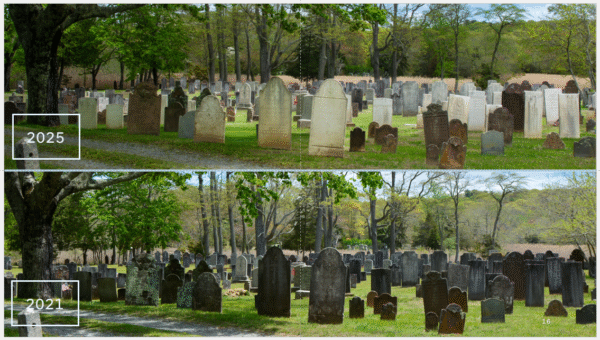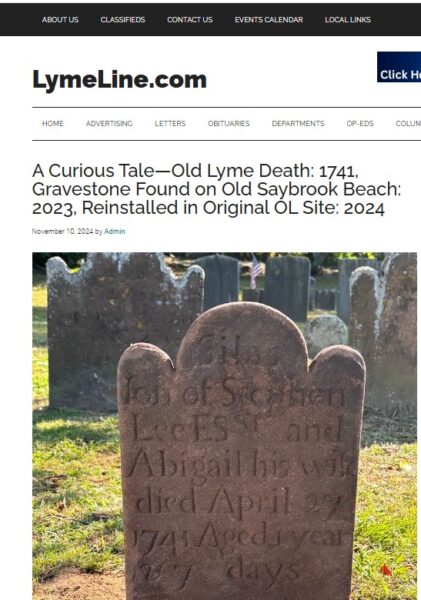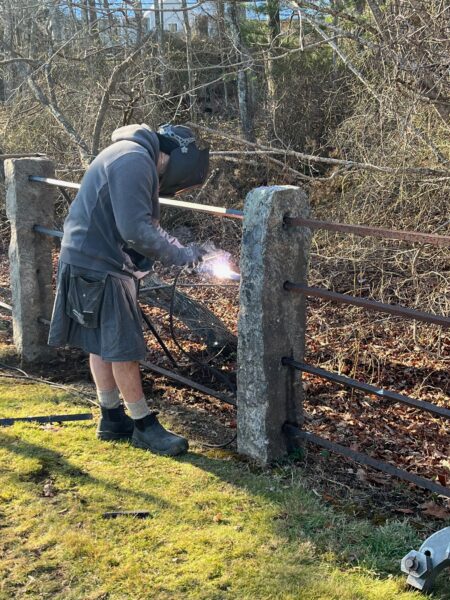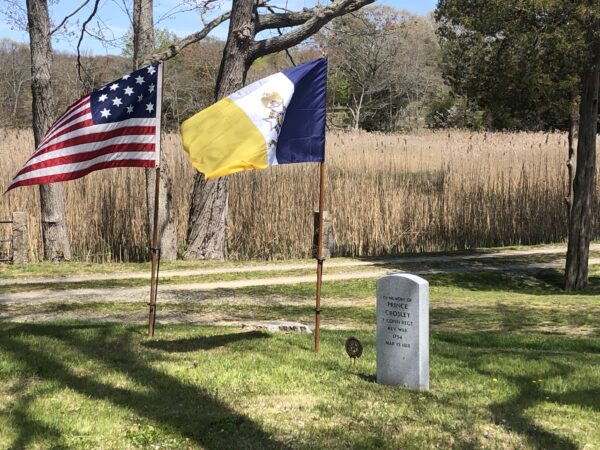STORIES IN STONE
MARY LORD'S CONFESSION
When fourteen OLCA volunteers gathered in September 2021 to begin restoring the weathered gravestones in the Ancient Section of Duck River Cemetery, they raised and reset a simple brownstone marker lying face down in the grass. Its nearly three centuries-old- inscription, protected from the elements, was clearly legible: Mary Lord, wife of Thomas, died Feb. 28, 1734, age 63.
One of the town’s earliest inhabitants, Mary Lee Lord was born in Lyme in 1670, the year the small settlement on the east side of the Connecticut River was officially named. The eldest daughter of Thomas and Sarah Lee, Mary had a twin brother John and seven younger siblings and half-siblings. In 1693, at age 23, she married Thomas Lord, who with his brother Richard Lord had acquired large tracts of valuable land along the Connecticut River. Mary and Thomas had five children. After her husband died in 1730 at age 86, Mary lived as a widow for four seemingly troubled years in the house she inherited.
Thomas Lord anticipated that his death would cause family conflict and drafted a will in 1720, at age 76, in an effort to “prevent contention” at the time of his decease. He specified that one-third part of his housing, lands, and orchard would belong to his dear wife Mary during her natural life and that one-third of his movable estate would “be at her own disposal forever.” He gave the remaining two-thirds of his estate to their sons. A year after Thomas Lord’s death, his nephew and neighbor Richard Lord Jr., “at a meeting held by the first assembly of Christians in Lyme,” accused his aunt of “railing and evil speaking against her neighbors.”
Richard Lord Jr. had prospered as a merchant in the West Indies trade and served as a probate judge for New London County. When he publicly denounced his aunt before church members in 1731, he owned several enslaved African-descended and mixed-race workers, among them Oxford and Temperance, who provided agricultural and domestic labor in his home and on his land. A person of prominence and authority, Lord asserted at the church meeting that his aunt had been “convicted of feloniously taking her neighbor’s estate.” Members of the congregation, after “serious consideration,” found her guilty on the first count of “evil speaking,” but rejected the second count of “feloniously taking,” since a conviction had already been given “in the civil law.”
Five days later Mary Lord confessed before church members to “abusing her neighbors,” having apparently rebuked her nephew for depriving her of her inheritance. Richard Lord Jr. successfully consolidated his ownership of all the Lord family’s land at Tantammuhaeg. When he died in 1776, the land that Mary had briefly inherited passed to his second son Enoch Lord, whose “red house” stands today overlooking Lord Cove.
— Carolyn Wakeman
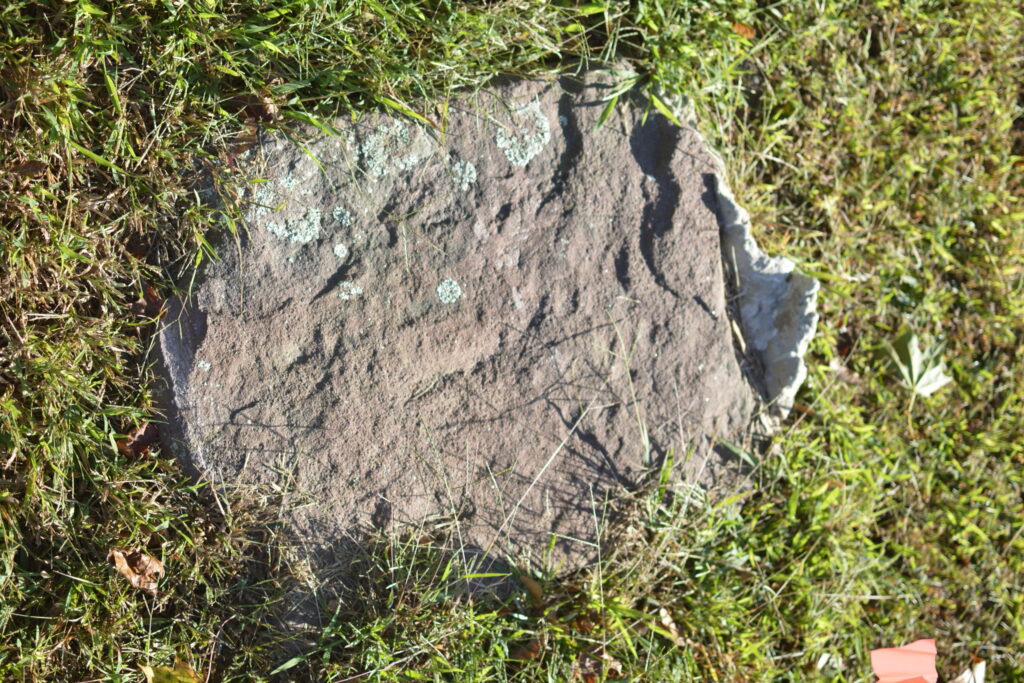
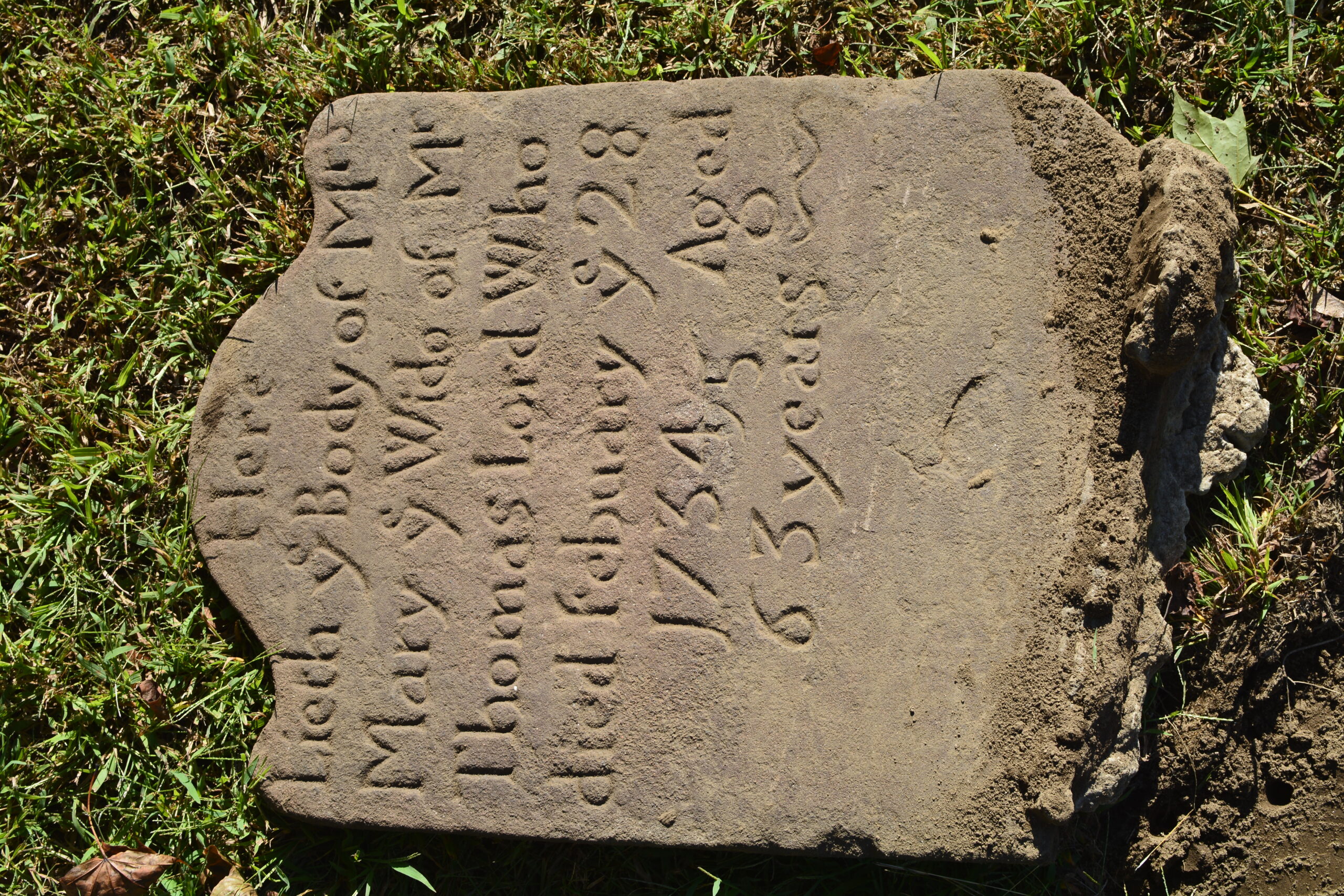
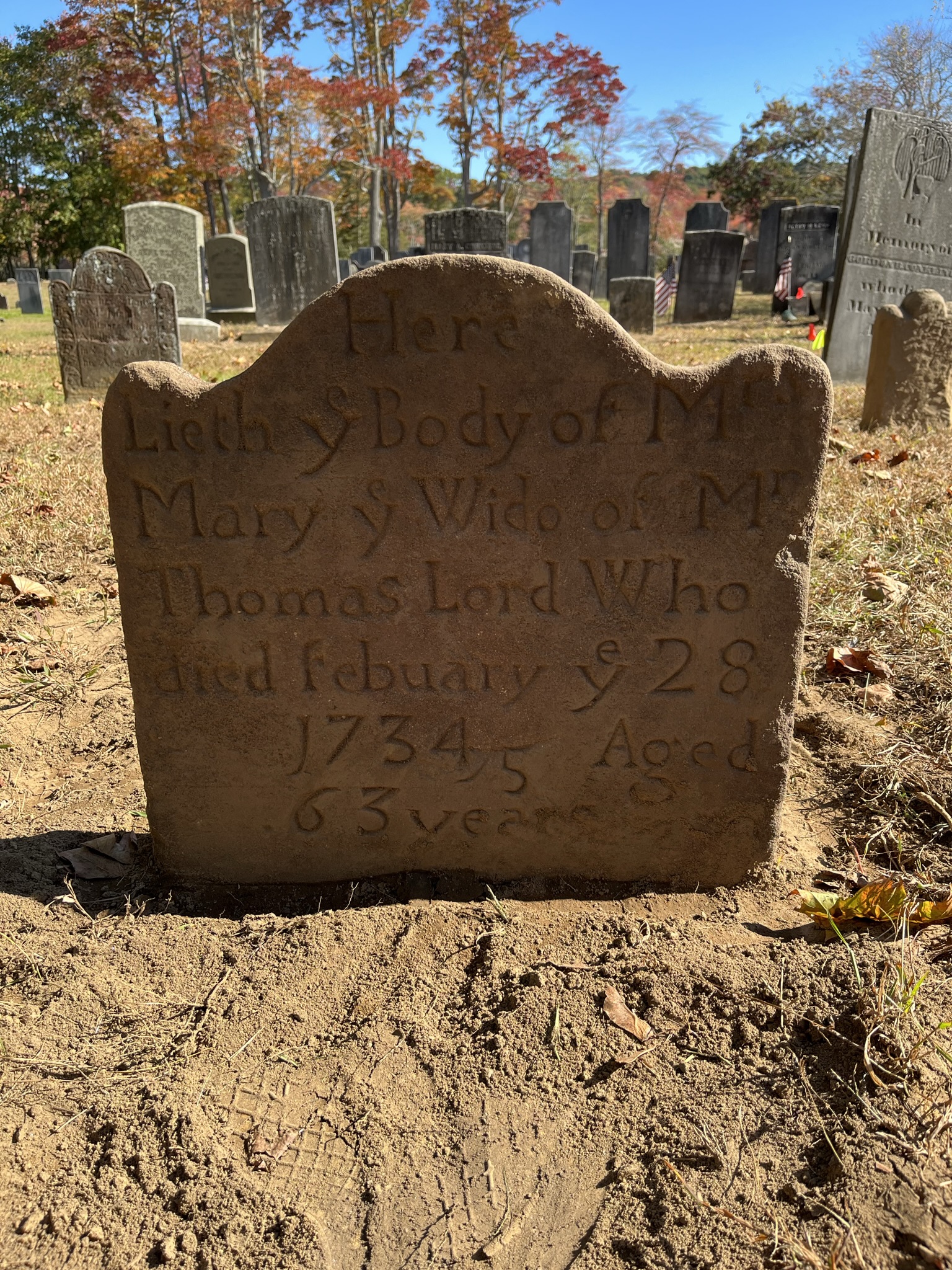
— Carolyn Wakeman
Gravestones in Duck River Cemetery have stories to tell about the lives of those who passed before us in the Lyme region and the events that shaped the development of a Connecticut town, distinguished by its prominent lawyers and ministers, its shipbuilding and maritime trade, its architecture and scenic landscape, and its contributions to education, conservation, and the arts.
